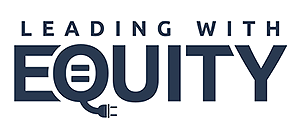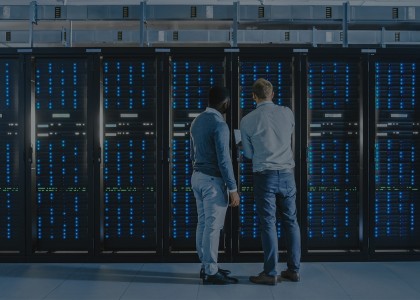For nearly 15 years, ACEEE has released numerous scorecards and progress reports to benchmark and drive clean energy action among states, localities, and utilities. Through these efforts, we have captured best practices and set a high bar for identifying clean energy leaders. Moving forward, we want to ensure energy efficiency leadership clearly includes efforts to advance equity, and that everyone has equitable access to and benefits from clean energy investments. To that end, with support from the Barr Foundation, the Kresge Foundation, and The JPB Foundation, and in partnership with AEClinic and Kinetic Communities Consulting, ACEEE is today launching the Leading with Equity Initiative.
Too many Americans struggle every month to afford high energy bills—a problem that the COVID-19 pandemic and recession have exacerbated. Our 2016, 2018, and 2020 research on energy burdens—the percent of income spent on energy—shows that high burdens fall disproportionately on marginalized communities, particularly in areas that have been subjected to other systemic racial and environmental injustices. Within the energy industry itself, Black, Latino, Native American, and other historically marginalized groups represent a small fraction of workers and decision makers. This perpetuates the cycle of exclusion, underinvestment, and inequitable clean energy policies and program outcomes.
In recent years, ACEEE has begun to tackle these issues head on by examining the many ways in which energy efficiency policy and programs can address these inequities and create the needed systemic change for a fairer and more just clean energy economy. This commitment is reflected in our Call to Action, released last year. We put efficiency at the forefront of our ambitious efforts to build a vibrant and equitable economy that reduces energy waste, saves money, creates jobs, and fairly distributes the benefits of clean energy investments to all.
An Emerging Emphasis on Equity in ACEEE’s Scorecards
Our research efforts and engagement with those at the forefront of designing and implementing clean energy strategies indicate increasing commitment to further equity-driven approaches. At the same time, our research has revealed there’s still much work to do. Take, for example, what we’re seeing in cities across the United States.
In ACEEE’s 2020 City Clean Energy Scorecard—where we track clean energy actions of the 100 largest U.S. cities—we center equity throughout by evaluating the extent to which city-led actions are informed by, and held accountable to, input from communities. We consider whether actions are designed to benefit all residents, especially those groups disproportionally overburdened by energy costs and historically excluded from accessing and benefiting from clean energy investments.
Specifically, we assess the extent to which cities and in some cases, the utilities that serve them do the following:
- Engage in equitable and inclusive climate and energy planning
- Adopt inclusive procurement and contracting policies for municipal operations
- Promote inclusivity in clean energy workforce development programs
- Support renewable energy and energy efficiency incentives for low-income households
- Foster clean, efficient transportation for low-income communities
Overall, few cities scored well on these metrics. Among the few cities making real progress, most were focused on making sure communities were directly engaged in developing plans and creating accountability metrics to ensure they achieve their equity-related commitments. In comparison, fewer cities gave marginalized groups—such as those with low incomes, housing insecurity, and disabilities as well as people of color, the youth, the elderly, immigrants, and non-English speakers—formal roles to participate directly in and affect the outcome of decision-making.
Our 2020 State Energy Efficiency Scorecard found that some states are trying to foster equitable policies. For example, California, New Jersey, and Oregon have taken steps to expand programs that better meet the needs of customers with lower incomes. Also, our 2020 Utility Energy Efficiency Scorecard found that utilities are dedicating more of their efficiency funding (on average 10% of total portfolio spending) to low-income programs than in previous scorecards. As a result, average low-income program energy savings (in MWhs) increased by more than 60% from 2015 to 2018. Overall, 31 of the largest 52 utilities in the United States offer comprehensive programs for low-income customers, such as home weatherization and retrofits. Still, states and utilities can do much more to ensure that policy and program outcomes are equitable.
Next week, we will release our first-ever State Transportation Electrification Scorecard. While I cannot divulge the findings (no spoiler alert here!), I can say that all states will need to do a lot more to promote equitable access to electric vehicles and charging stations. Such clean vehicles will be a vital tool for reducing emissions and addressing climate change.
Digging Deeper with Our New Initiative
With our new two-year Leading with Equity Initiative, our research will dig deeper into equity challenges and solutions. With more-comprehensive metrics that measure equity-centered clean energy policy and program outcomes, communities can work to hold policymakers accountable and drive outcomes toward more equitable decarbonization for all.
This project will convene community-based organizations, advocates, and utilities to jointly define what success looks like for equitable decarbonization. We will then work to further embed metrics that drive equitable clean energy outcomes into ACEEE’s Utility, State, and City Scorecards. Building on ACEEE’s utility peer working groups, we will also work with utilities and program administrators to outline how their portfolios can advance equitable outcomes broadly and determine what data is needed to measure the success of these offerings. We will collaborate to push the needle to develop new policy, encourage necessary data collection, and foster collaboration to achieve more equitable decarbonization.
The Leading with Equity Initiative will have two concurrent, parallel advisory groups, one for community-based organizations and advocates, and one for utilities and program administrators.
Through a series of workshops, we aim to:
- Ensure frontline communities are represented and are jointly driving the development of improved equity-related metrics
- Better understand current utility, state, and city capacity to report data on desired metrics
- Generate proposed changes to each of ACEEE’s scorecards, setting the bar in a way that represents real performance on the metrics that matter most to communities
Join the Initiative
Interested in learning more about our equity metrics efforts and/or want to share your own recommendations for improving and expanding them for city, state, and utility decarbonization? Please complete the survey at the link below to be kept up to date on the Leading with Equity Initiative and ways to be involved. And feel free to reach out directly to Ariel Drehobl if you have questions or would like additional information.
GO TO FORM




